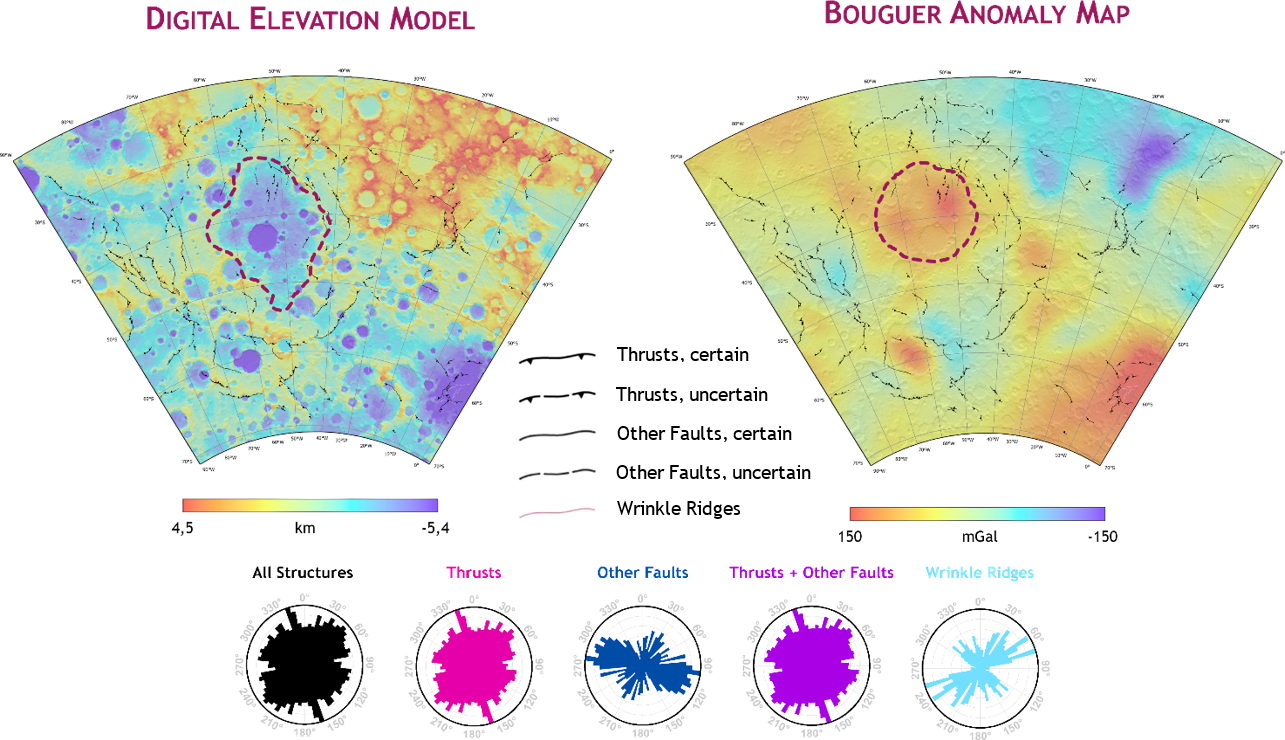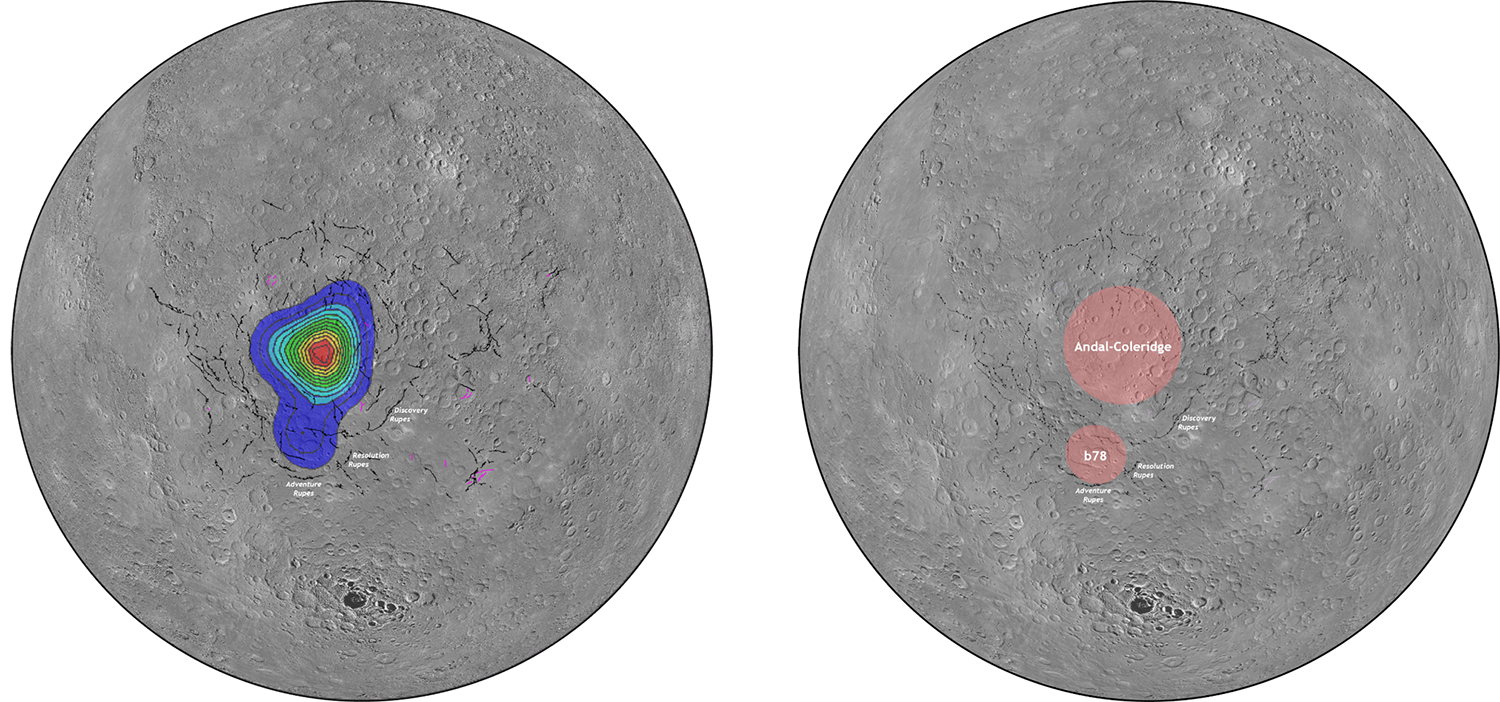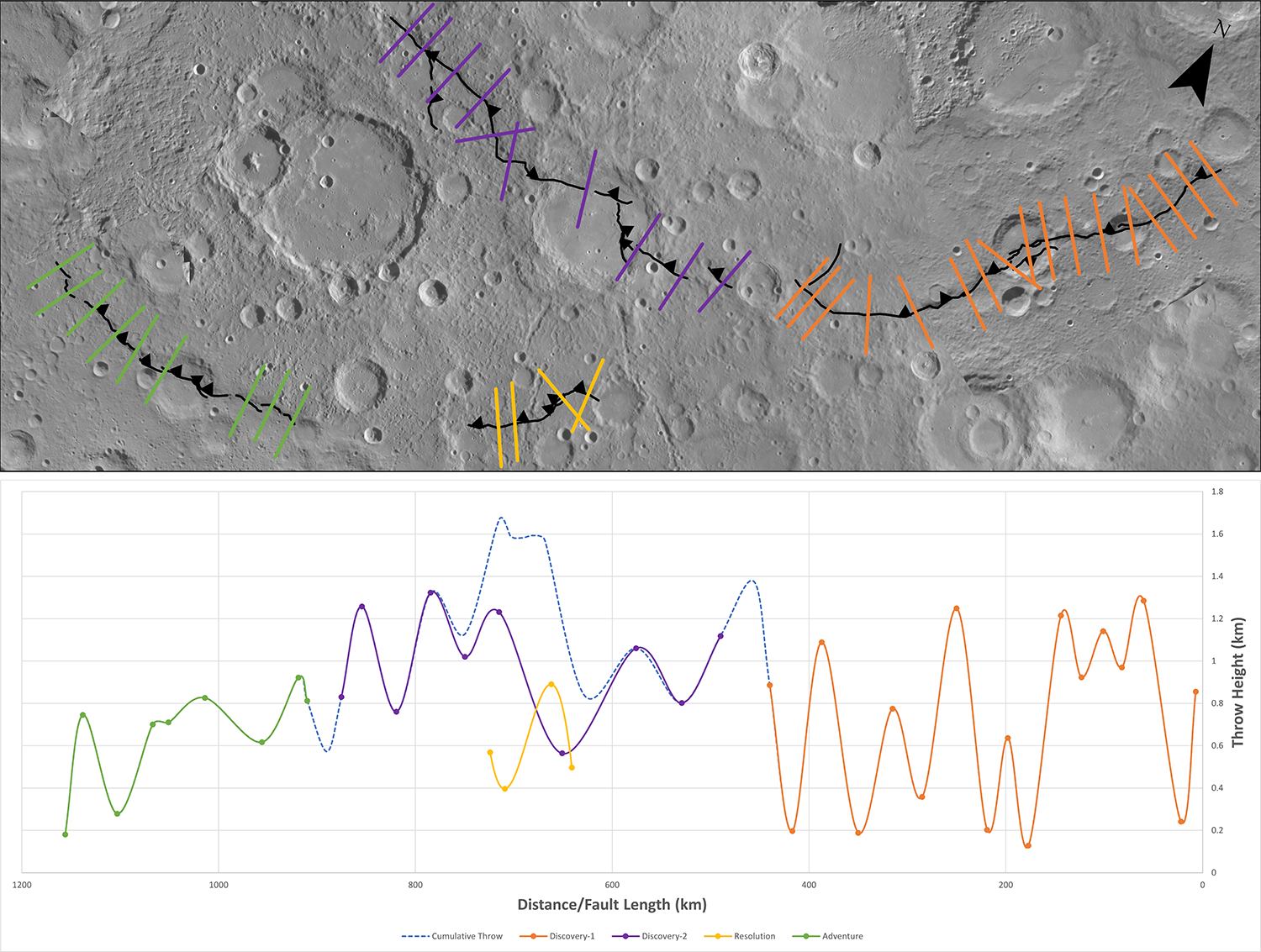Tectonic influence of multi-ring basins: The case of Mercury’s Discovery Quadrangle and the Andal-Coleridge basin.
- 1National Institute for Astrophysics, Institute for Space Astrophysics and Planetology, Rome, Italy (antonio.sepe@inaf.it)
- 2University of Naples “Federico II”, Department of Earth Sciences, Environment and Resources, Naples, Italy
Introduction
Mercury’s Discovery quadrangle is located at southern mid-latitudes in a heavily cratered region roughly antipodal to Caloris Basin [1]. The quadrangle hosts a probable pre-Tolstojan multi-ring impact basin named Andal-Coleridge, surrounded by a three- to five-ring system [2,3].
Here we present a high-resolution structural map of the quadrangle that will contribute to the 1:3M quadrangle geological map series in preparation for the BepiColombo mission [4]. In addition, we carried out a structural analysis in order to study the structural framework of the quadrangle, validate and ascertain the existence of the Andal-Coleridge basin and investigate its influence on the tectonic evolution of this region.
Data and methods
We produced a high-resolution structural map of the quadrangle utilizing MESSENGER end-of-mission products [5]. Structure strikes were then plotted in rose diagrams to recognize preferential trends at the regional scale. We also investigated the structural relationships between three main scarps (Discovery, Adventure and Resolution Rupes – DAR) –including another scarp (here named Discovery-2) that seems to be the westward continuation of the Discovery Rupes (Discovery-1)– by making several profiles across them and measuring their throw. Furthermore, to validate and ascertain the presence of the Andal–Coleridge basin, we employed gravimetric data and estimated the related stress field via beta-analysis.
Map and trend of structural features
Our structural map (Fig.1) reveals ∼500 segments of contractional structures –including lobate scarps, high-relief ridges and wrinkle ridges– mainly arranged in a circular pattern at the approximate centre of the quadrangle, encircling both a broad topographic low and a mascon, similar to Caloris Basin [6], although identified only in the Bouguer anomaly map of [7]. Strike directions of the segments within rose diagrams generally show a uniform distribution of bins –together with a NW-SE preferential trend– suggesting an impact-related nature for most structures [8].

Figure 1 Structural map of the Discovery quadrangle overlayed to the Digital Elevation Model of [9] (left) and the Bouguer Anomaly Map of [7] (right). The red dashed line approximately delimits the topographic low and the mascon respectively.
Beta-Analysis
Following the work done for Mercury and Mars by [2] and [10], we estimated the stress field related to concentric structures via beta-analysis. This approach reveals a bimodal distribution consisting of a primary "bull's-eye" distribution, whose centre represents the point from which the causative stress field for faults spread, and a secondary, much less dense, distribution (Fig.2). Discovery Rupes aligns concentrically with the primary distribution, while Adventure and Resolution Rupes exhibits concentric alignment with the secondary distribution roughly coincident with another probable impact basin, informally named b78 [11], where another smaller mascon is present.

Figure 2 (left) The stress field resulting from beta-analysis in stereographic projection centred at quadrangle’s centre. (right) The hypothesised location and extent of Andal-Coleridge and b78 basins from [11].
Throw-Height Analysis
For each profile the scarp height was measured and then plotted against its position on the fault trace, corresponding to the fault length, resulting in a throw profile (Fig.3). The analysis of the throw profiles provide evidence that the three structures represent the morphological expression of two different faults, the Discovery fault and the Adventure-Resolution fault [2], grown hard-linking several segments together. These two faults also appear to be kinematically soft-linked, since the cumulative throw falls approximately at the centre of the system, consistent with terrestrial fault growth patterns [12]. Additionally, Discovery Rupes shows evidence of reactivation within Rameau crater, suggesting a process of fault-trace erosion and its subsequent re-emergence possibly due to Mercury's global contraction. Adopting previous dating of Rameau crater and Discovery Rupes [14,15], we derived a preliminary chronology for Discovery Rupes evolution and found a peak in throw-rate during the Tolstojan period, with declining activity towards the Mansurian period which is possibly continuing to the present [15].

Figure 3 (up) The DAR system and the 40 profiles used to produce the throw-height plot (down). Each peak on the plot represents a fault segment.
Conclusions and future work
The present work reveals a complex structural framework within Mercury’s Discovery quadrangle. The concentric alignment of structures to both a topographic low and a mascon together with the general uniform distribution shown in rose diagrams strongly supports the existence of the Andal-Coleridge basin. The concentricity of Discovery Rupes to the primary distribution identified through beta-analysis emphasizes its connection to the basin. In contrast, Adventure and Resolution Rupes display concentric alignment with the smaller b78 impact basin. This observation implies that these two scarps originated from two distinct impacts and were reactivated by Mercury's global contraction as a linked fault system. The Andal-Coleridge basin likely introduced mechanical discontinuities in the crust, influencing the localization and orientation of faults [2]. These weaker zones were eventually exploited during the subsequent global contraction. Indeed, the throw-height analysis shows signs of reactivation where Discovery Rupes cuts Rameau crater, suggesting a peak in throw-rate during the Tolstojan period.
We aim at improving the structural map of the quadrangle to better understand the NW-SE-trending structures’ behaviour and better investigate the fault reactivation. This study may also represent a contribution for evaluating the rate of global contraction and its magnitude throughout Mercury’s evolution.
Acknowledgements
We gratefully acknowledge funding from the Italian Space Agency (ASI) under ASI-INAF agreement 2017-47-H1.
References
[1] Trask and Dzurisin (1984). USGS, IMAP 1658. [2] Watters et al. (2001). Plan. and Sp. Sci., 49(14-15), 1523-1530. [3] Spudis and Strobell (1984). LPSC, 814-815. [4] Galluzzi et al. (2019). JGR: Planets, 124(10), 2543-2562. [5] Denevi et al. (2017). Sp. Sci. Rev., 214(1). [6] Smith et al. (2012). Science, 336. [7] Buoninfante et al. (2023). Sci. Rep., 13, 19854. [8] Delbo et al. (2019). LPI Contrib. No. 2189. [9] Becker et al. (2016). LPSC Contrib. No. 1903. [10] Wise et al. (1979). Icarus, 38, 456-472. [11] Orgel et al. (2020). JGR: Planets, 125(8). [12] Kim and Sanderson (2005). Earth-Sci. Rev., 68(3-4), 317-334. [13] Kinczyk et al. (2020). Icarus, 341, 113637. [14] Clark et al. (2024). LPSC Contrib. No. 3040. [15] Tosi et al. (2013). JGR: Planets, 118(12), 2474-2487.
How to cite: Sepe, A., Ferranti, L., Galluzzi, V., Schmidt, G. W., Buoninfante, S., and Palumbo, P.: Tectonic influence of multi-ring basins: The case of Mercury’s Discovery Quadrangle and the Andal-Coleridge basin., Europlanet Science Congress 2024, Berlin, Germany, 8–13 Sep 2024, EPSC2024-1106, https://doi.org/10.5194/epsc2024-1106, 2024.